How to Connect Jira Service Management as Data Destination

The integration allows you to create new requests in Jira Service Management based on data from other systems. For example, you can transfer the requests from your website, landing page, or Google Sheets to Jira Service Management and process them in one place. This will allow you to efficiently automate workflows as efficiently as possible with the various services you use and save a lot of time.
Let's go through the entire Jira Service Management setup steps together!
Navigation:
1. What will integration with Jira Service Management do?
2. How to connect the Jira Service Management account to ApiX-Drive?
3. How can set up the selected action to transfer data to Jira Service Management ?
4. An example of the data that will be sent to your Jira Service Management .
5. Auto-update and update interval.
Once you've set up a Data Source system, such as Google Sheets, you can set up Jira Service Management as a Data Destination.
To do this, click "Start configuring Data Destination".

Select the system as Data Destination. In this case, you must select Jira Service Management.

Next, you need to specify the action - "Create REQUEST".
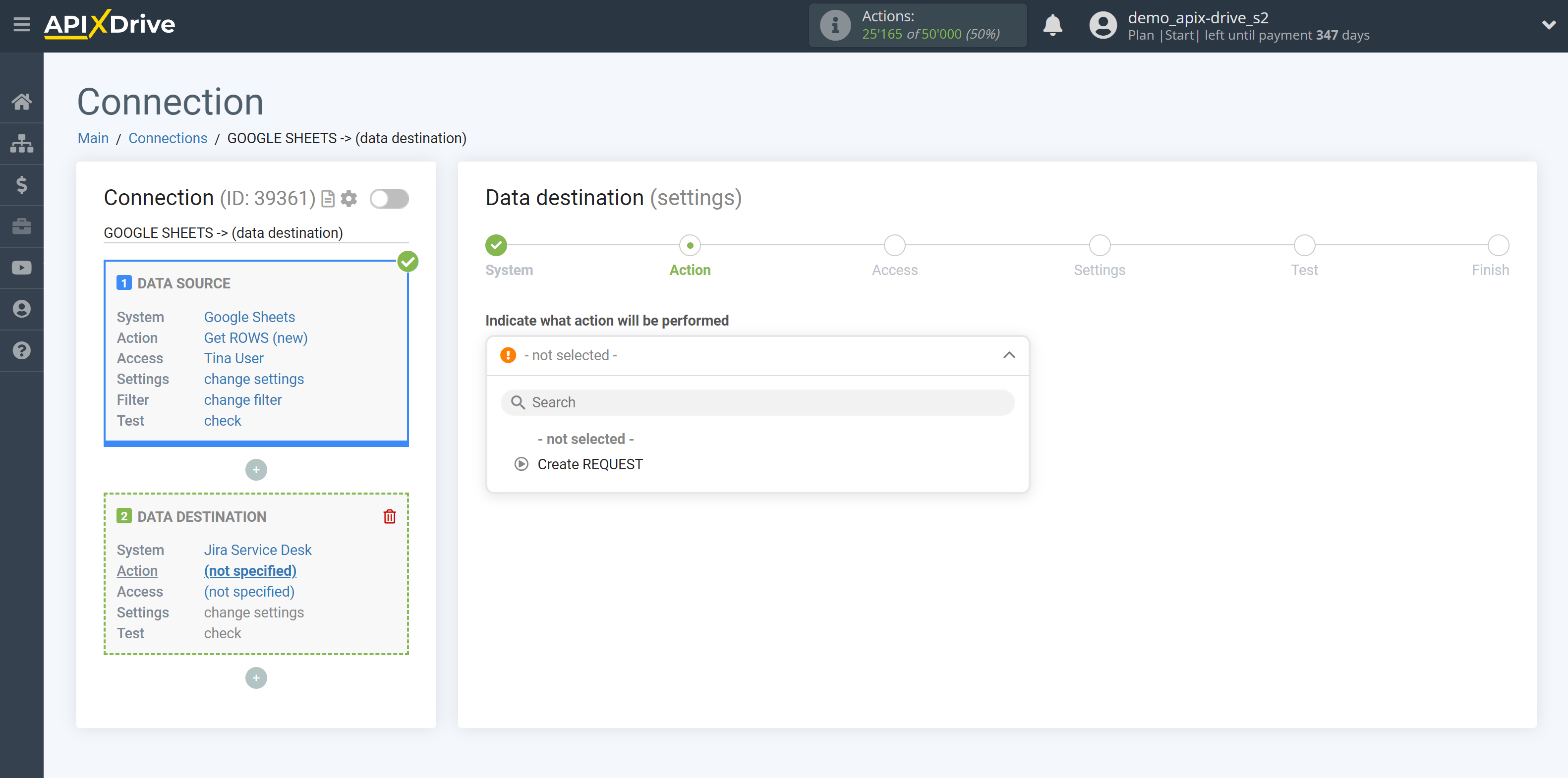
The next step is to select the Jira Service Management account from which will get the data.
If there are no accounts connected to the system, click "Connect account".
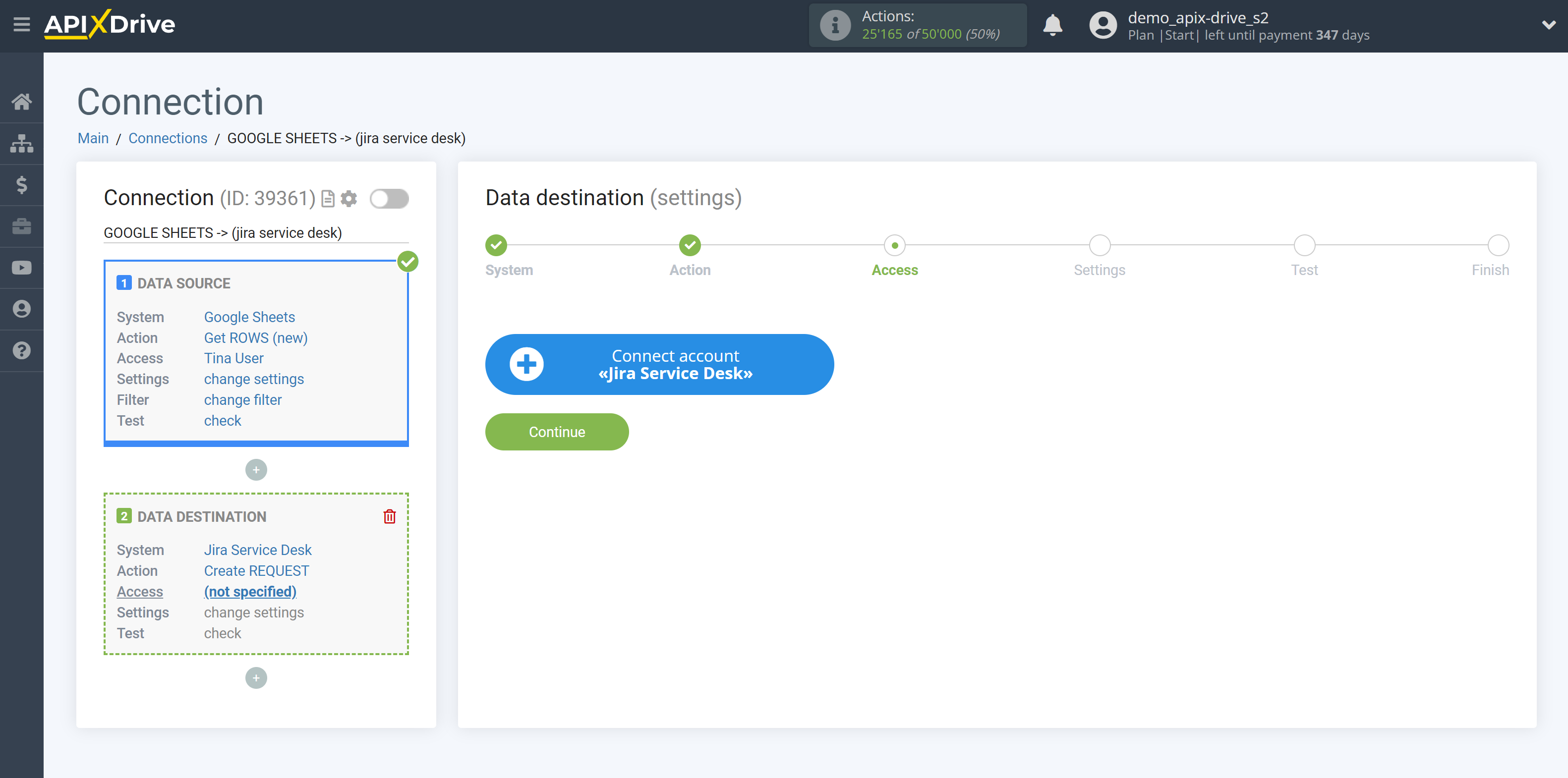
Select which account you want to connect to ApiX-Drive and grant all permissions to work with this account.
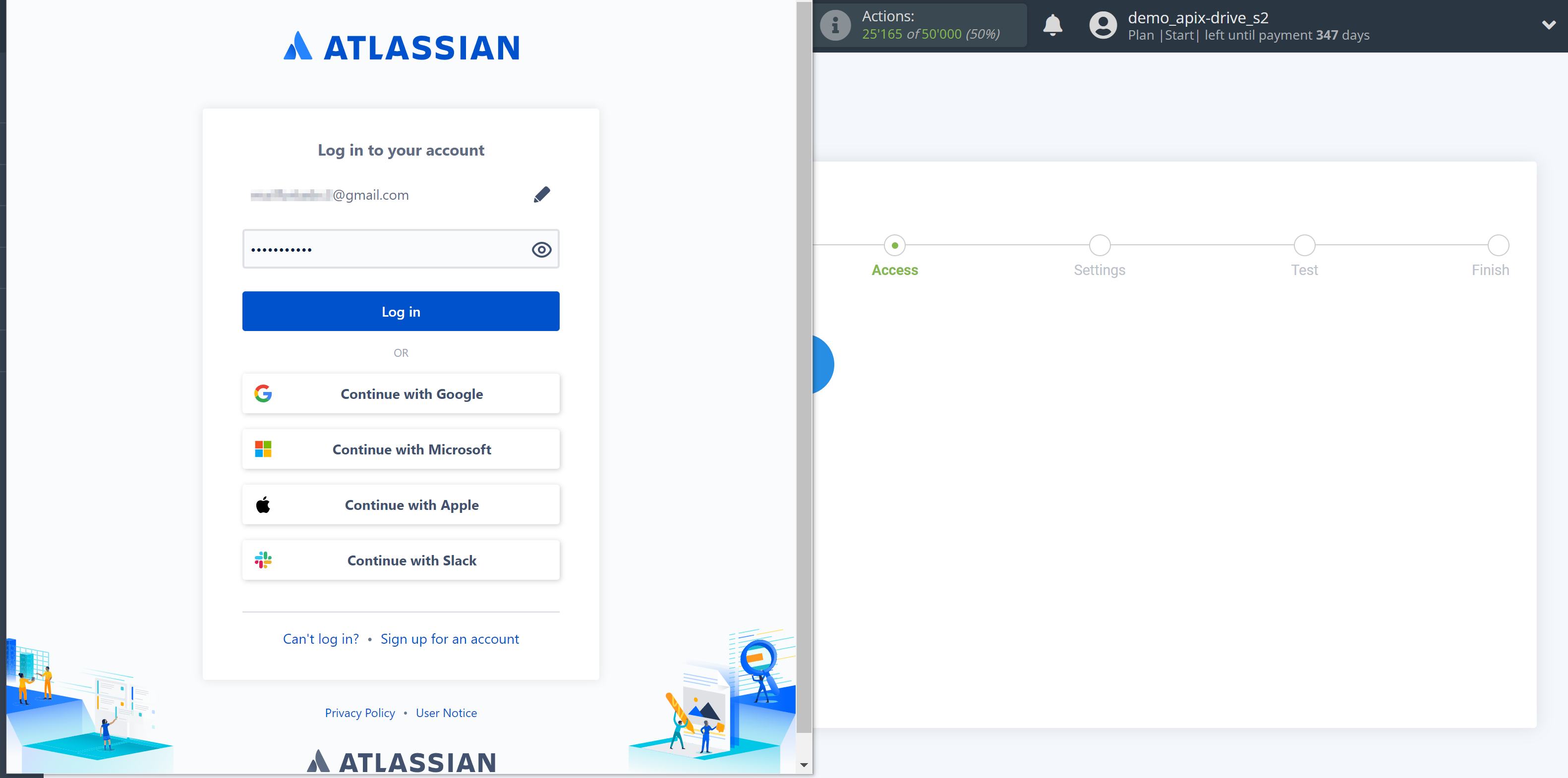
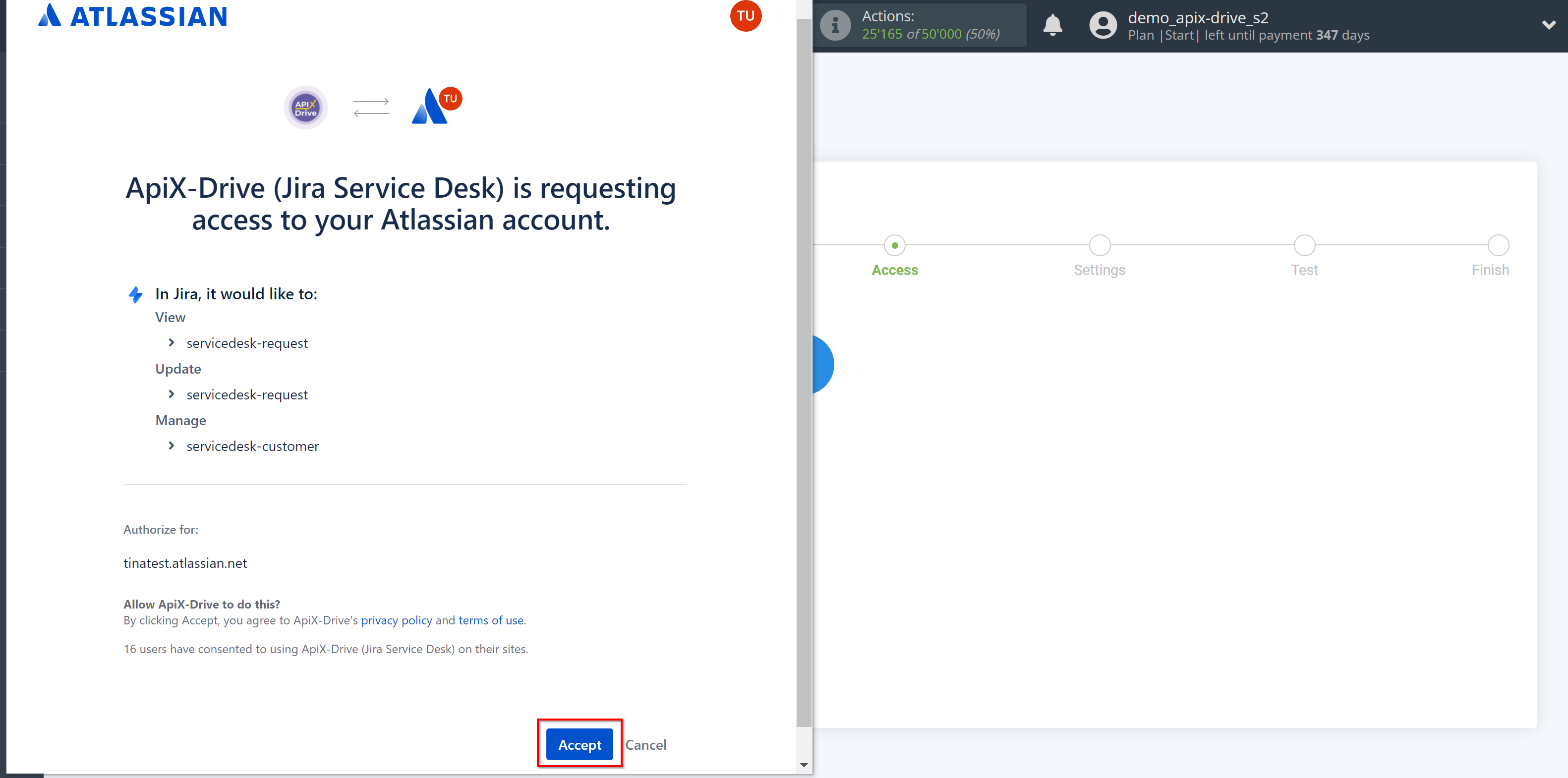
When the connected account is displayed in the "active accounts" list, select it for further work.
Attention! If your account is in the "inactive accounts" list, check the correctness of the specified data!

Now you need to select the project and request type from the drop-down list. Then assign variables from the data source to the desired Jira Service Management fields.
In order to add a variable, click on the field to which you need to transfer data and select the desired variable from the drop-down list. If necessary, you can write the data manually.
Click "Continue" when you're done with assigning fields.
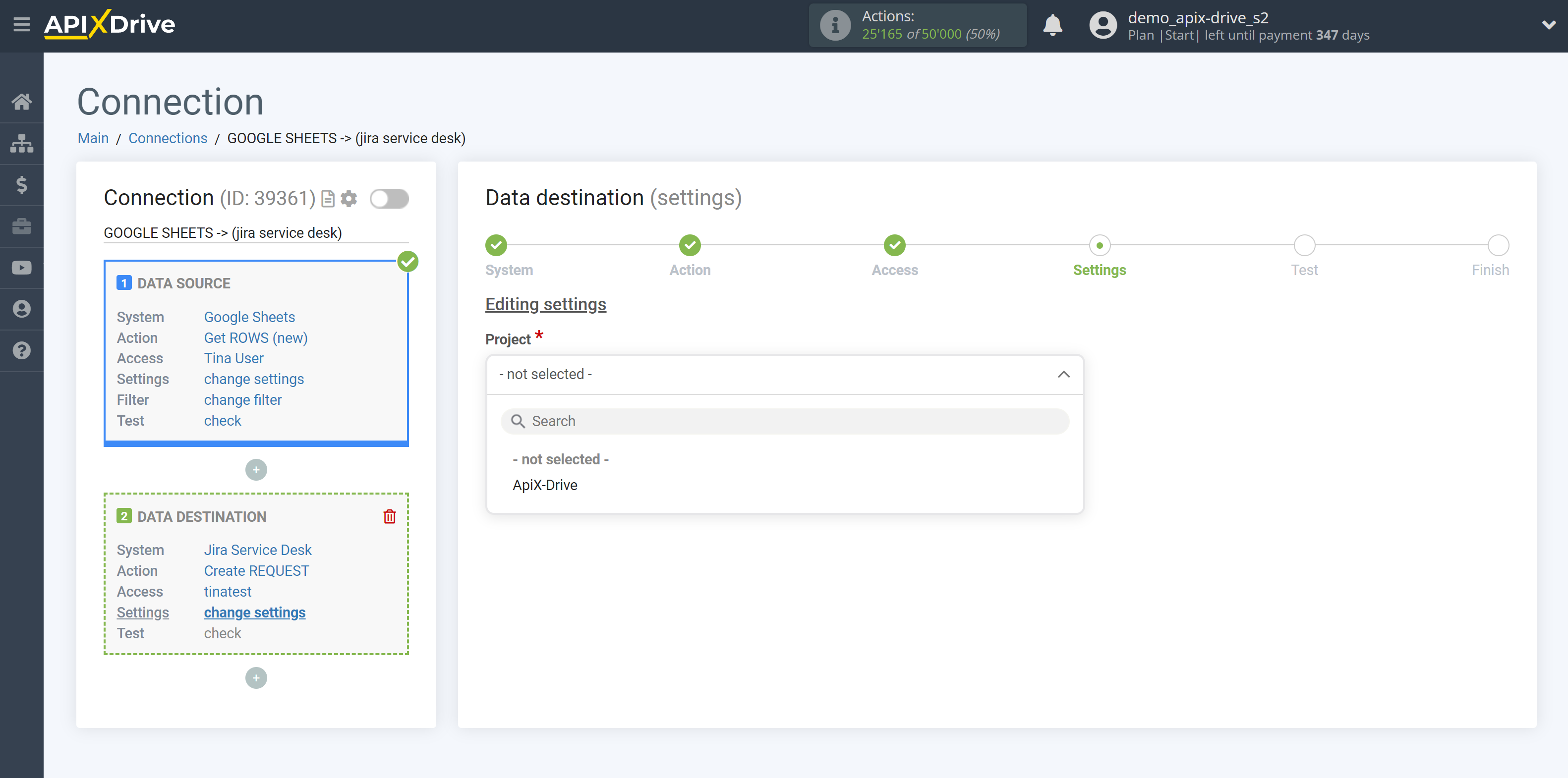
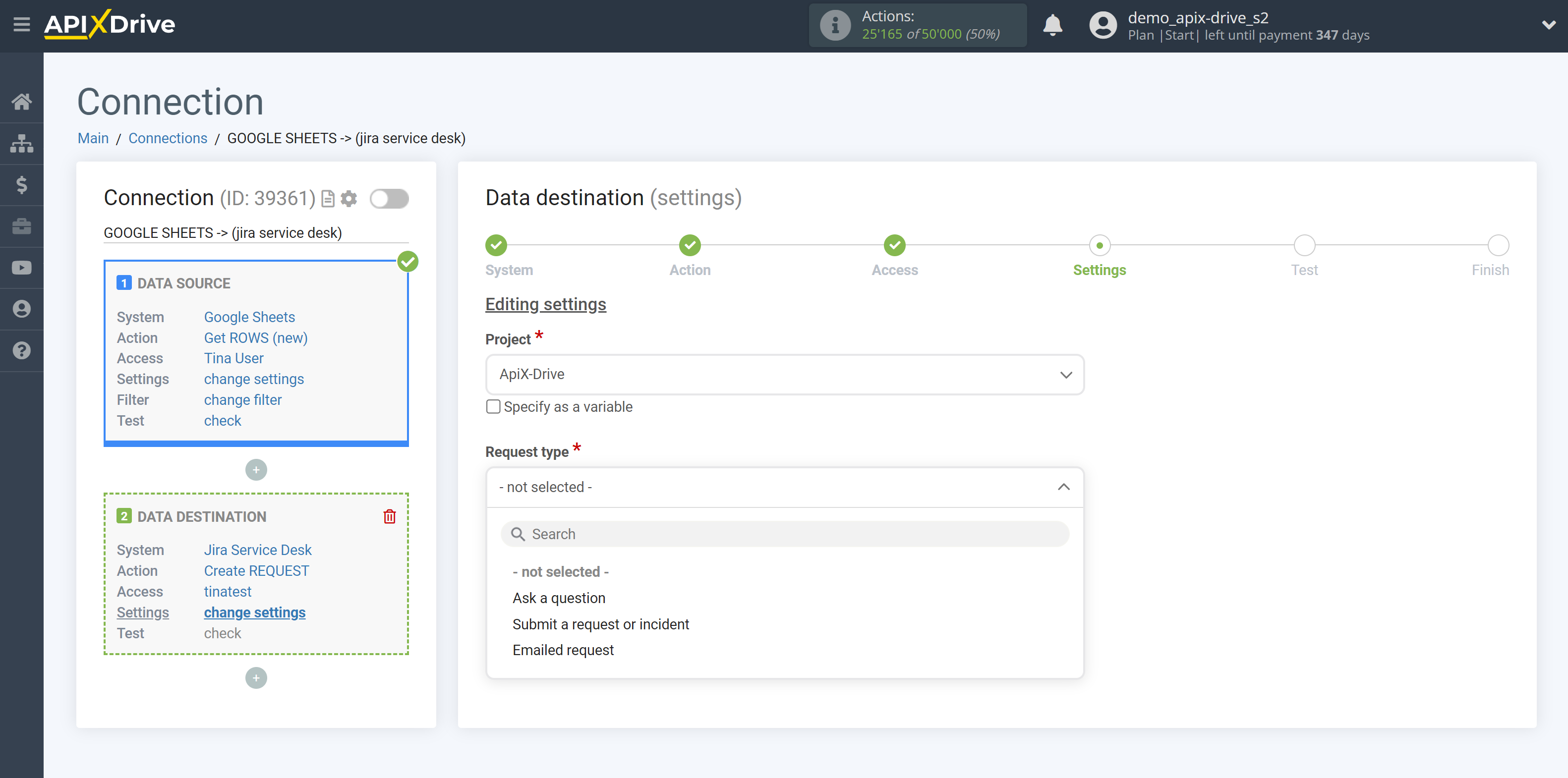
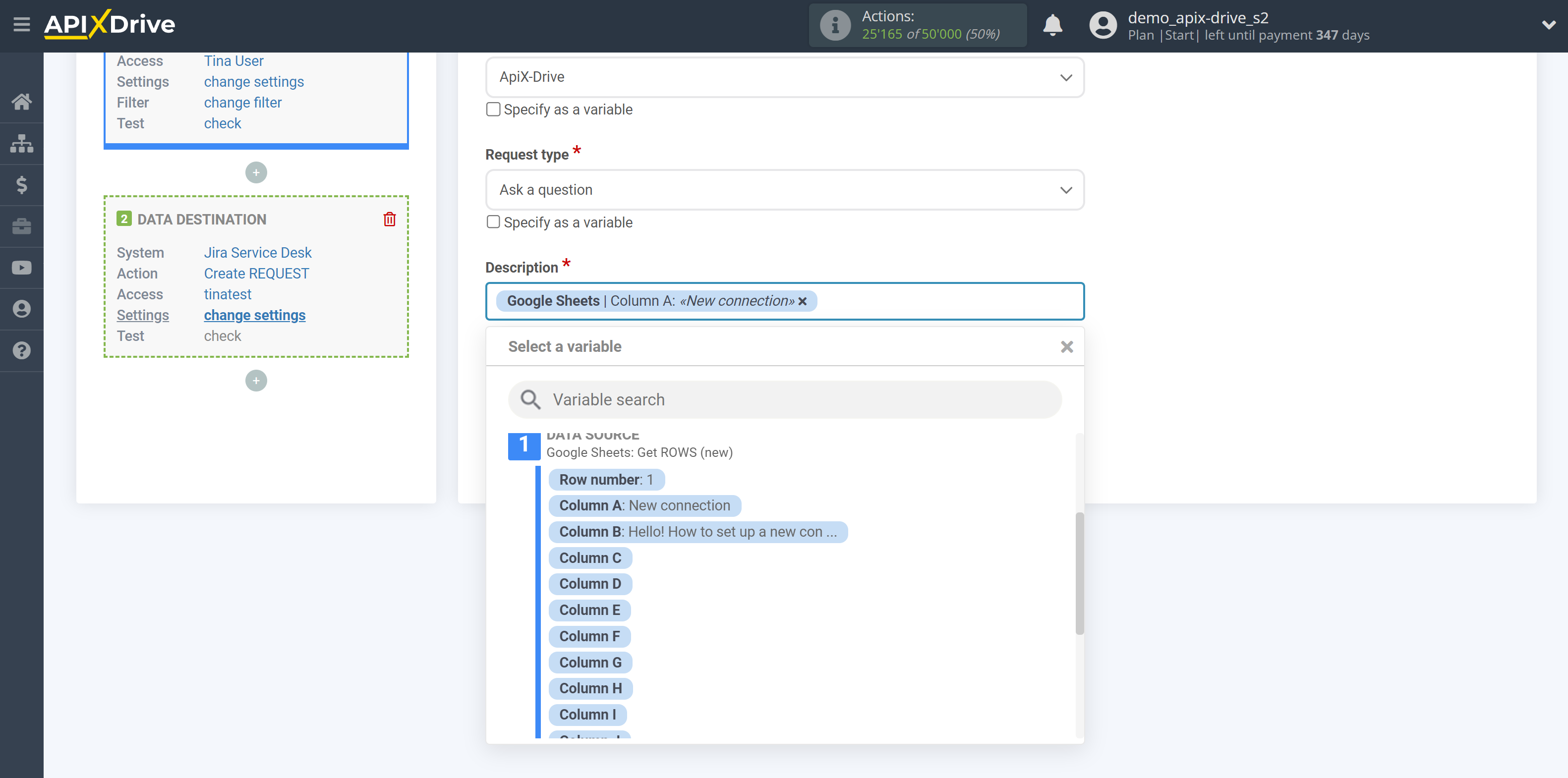

Now you can see the test data.
To check the correctness of the settings - click "Send test data to Jira Service Management " and go to your Jira Service Management to check the result.
If you want to change the settings - click "Edit" and you will go back one step.
If everything suits you, click "Next".
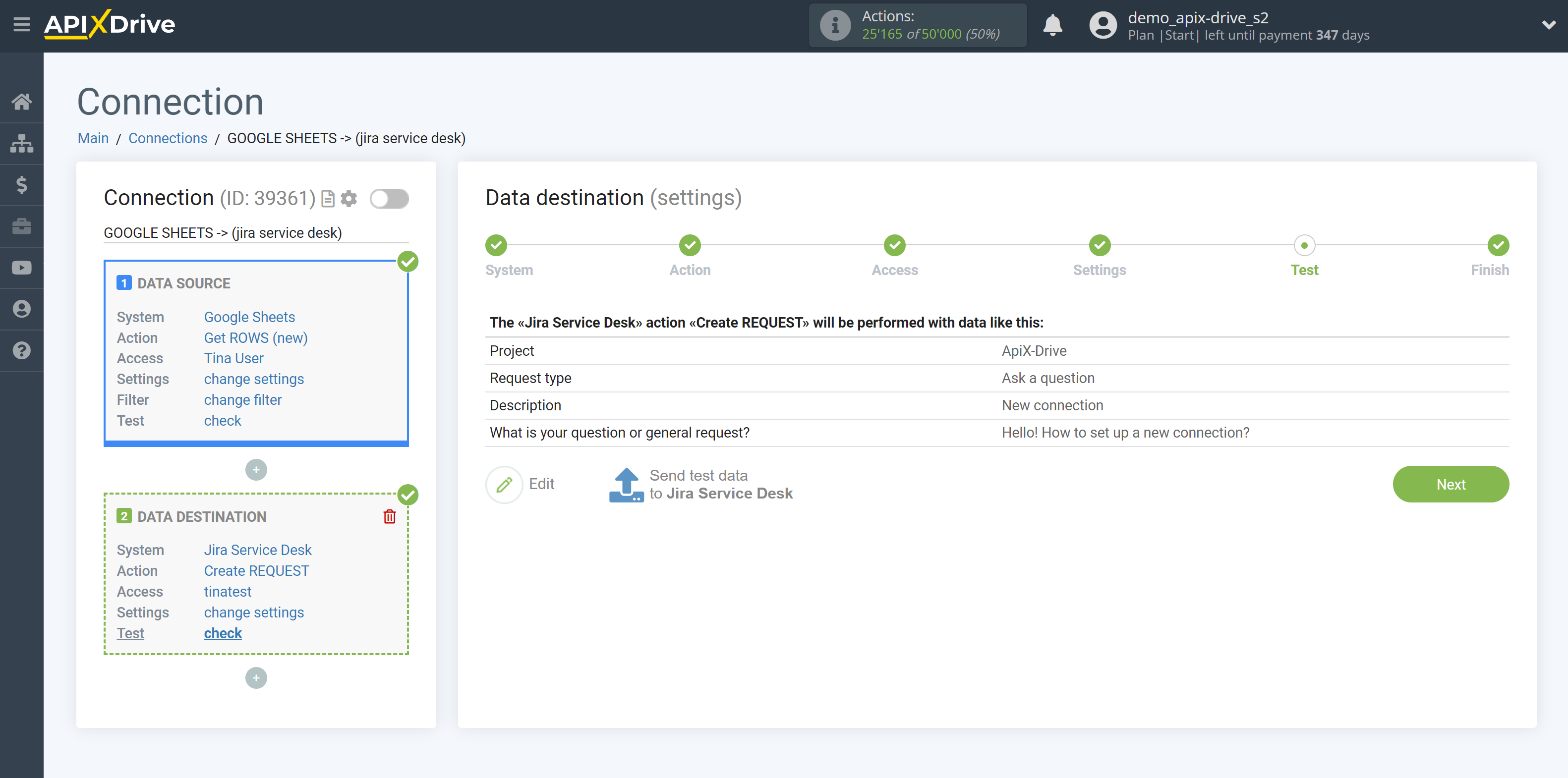
This completes the Data Destination system setup!
Now you can start choosing the update interval and enabling auto-update.
To do this, click "Enable update".
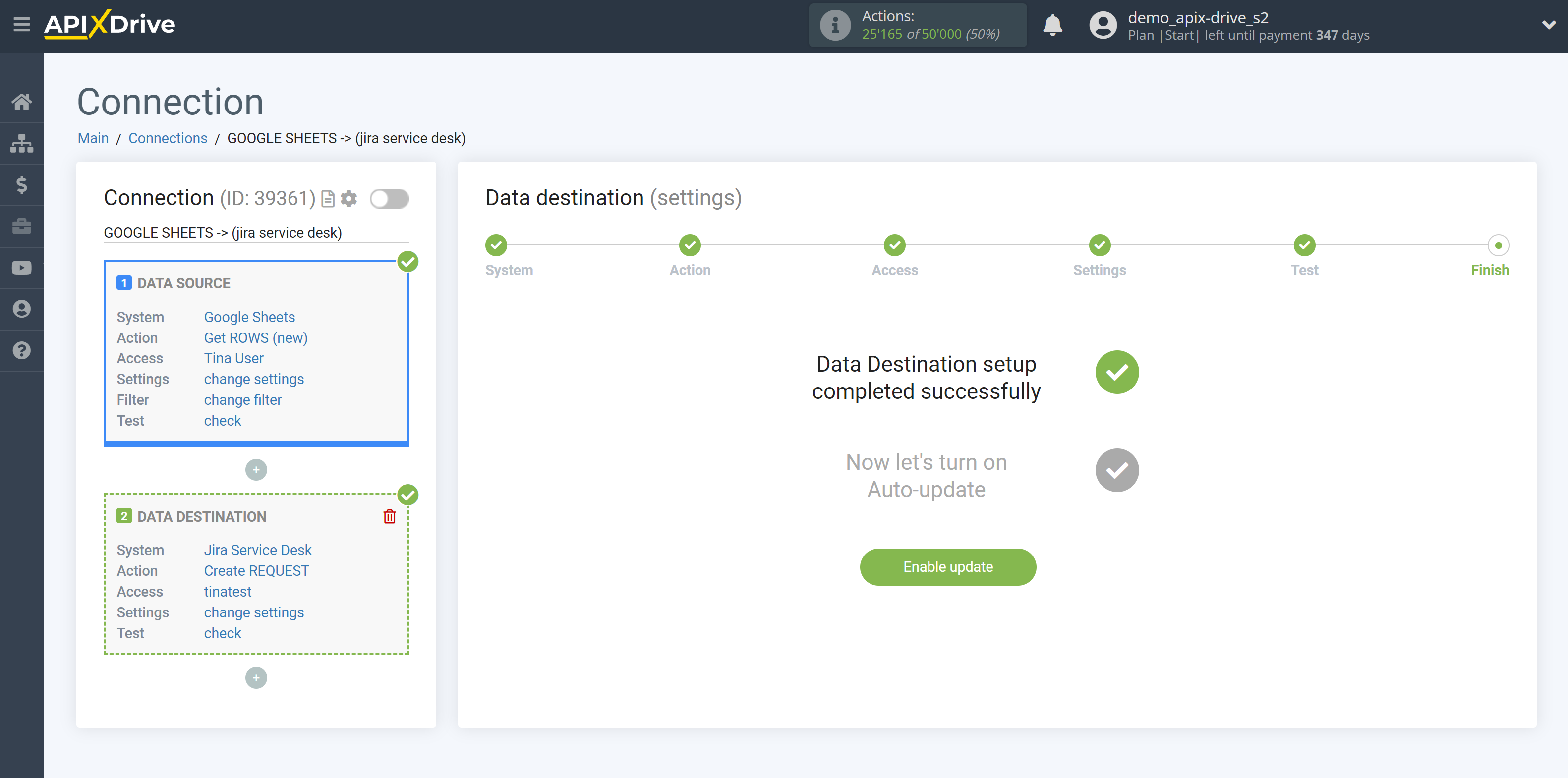
On the main screen, click on the gear icon to select the required update interval or setup scheduled launch. To start the connection by time, select scheduled start and specify the desired time for the connection update will be started, or add several options at once when you need the connection will be started.
Attention! In order for the scheduled launch to work at the specified time, the interval between the current time and the specified time must be more than 5 minutes. For example, you select the time 12:10 and the current time is 12:08 - in this case, the automatic update of the connection will occur at 12:10 the next day. If you select the time 12:20 and the current time is 12:13 - the auto-update of the connection will work today and then every day at 12:20.
To make the current connection transmit data only after another connection, check the box "Update connection only after start other connection" and specify the connection after which the current connection will be started.


To enable auto-update, switch the slider to the position as shown in the picture.
To perform a one-time data transfer, click on the arrow icon.

This completes the setup of Jira Service Management as a Data Destination! See how easy it is!?
Now don't worry, ApiX-Drive will do everything on its own!